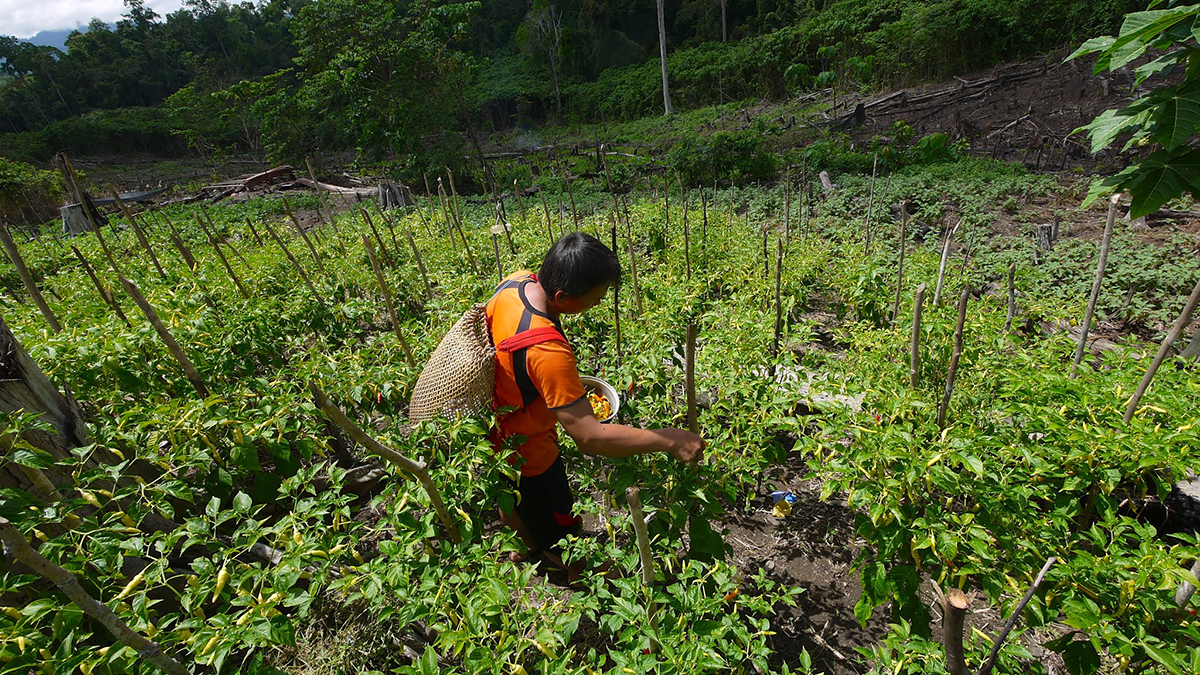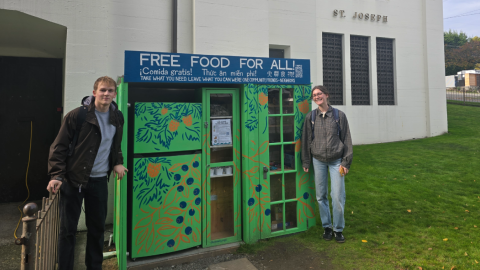Trees are one of our best allies in combating climate change, capturing greenhouse gases like carbon dioxide and preventing them from accumulating in the atmosphere.
Now researchers at the University of Washington and The Nature Conservancy (TNC) are investigating tropical forests as a natural climate solution that could help protect human health, create climate-resilient communities and slow the pace of planetary warming.
The pilot study is part of a new frontier of research at the intersection of human health, climate change and conservation. The research involves researchers from the UW Department of Environmental & Occupational Health Sciences (DEOHS), TNC and the UW College of the Environment.

“Cutting down forests not only leads to more heat exposure but also contributes to warming,” dealing a double blow to human health, said Dr. June Spector, DEOHS associate professor and co-leader of the study.
Natural climate solutions through land conservation, restoration and management could be a cost-effective strategy to both mitigate climate change and increase human resilience to its effects.
Nature's air conditioner
In the tropical forests of Indonesia’s East Kalimantan region, farmers routinely work in temperatures that pose a threat to their health.
Villagers working in open areas may face up to 6.5 hours of exposure to potentially dangerous temperatures. In nearby tropical forests, average ambient temperatures are as much as 8.3°C cooler compared to open areas.
As tropical forests are cleared for logging, oil palm plantations, mining and other uses, what does it mean for the health of the estimated 800 million rural villagers living in the world’s tropical forest nations?
The new study was sparked in part by the team’s earlier findings from East Kalimantan and will study up to 24 countries with tropical forests. David Battisti, UW Professor of Atmospheric Sciences, is also a co-leader of the study.
Quantifying the value of conservation
Spector said the study fills a gap for heat-related health data for tropical developing countries. Most existing work has been done in urban areas and more-developed countries.
And while the pilot study focuses on rural tropical communities, the eventual aim is broader: To help develop climate-resilient communities around the globe.
The research team aims to estimate the potential benefits of the cooling services that forests provide by quantifying for the first time the large-scale effects of temperature rise on human health and economic productivity.
.jpg)
Researchers will examine the impacts of past forest change on local climate, human heat exposure and risks of adverse heat health outcomes, as well as model impacts from future forest change. They will also estimate the economic cost of impacts on labor productivity and deaths linked to heat exposure.
Linking conservation and health
According to a TNC study, natural climate solutions can provide up to 37 percent of the mitigation needed by 2030 to keep global temperature rise below 2°C—the target of the Paris Climate Agreement.
The potential benefits of natural climate solutions on human health have received little attention until now, said Yuta Masuda, TNC senior sustainable development and behavioral scientist.
“In general, this intersection of conservation and human health is quite new,” Masuda said. “There’s a broader push to understand how human health is tied to nature and conservation.”
Heat is hazardous to your health
Rural subsistence farmers like those in East Kalimantan are especially vulnerable to warming and heat-related health challenges.
They work outside, rely almost exclusively on agriculture and natural resource extraction to make a living and have limited—or no—access to electricity for fans or air conditioning.
Heat strain can increase the risk of serious health outcomes, Spector said. Heat can impact cognitive performance and can boost the risk of traumatic injury as things like balance and concentration are impacted.
Even young, otherwise healthy people doing strenuous work can die from heat stroke. And heat can inflict short-term kidney stress and have cardiovascular impacts.
Most heat-related occupational health research has focused on heat exposure in a defined indoor or outdoor workplace, Spector said.
“This research goes beyond that to grapple with the source of outdoor ambient heat exposure—namely, global temperature rise,” Spector said.
“Conservation approaches that benefit health, reduce heat exposure and reduce longer-term global temperature rise could be a smart strategy moving forward.”
The research is funded by the UW Population Health Initiative and the UW Office of Global Affairs. The research team includes: Spector, Battisti, Lucas Zeppetello and Luke Parsons (University of Washington); and Masuda, Nick Wolff and Timm Kroeger (TNC).




